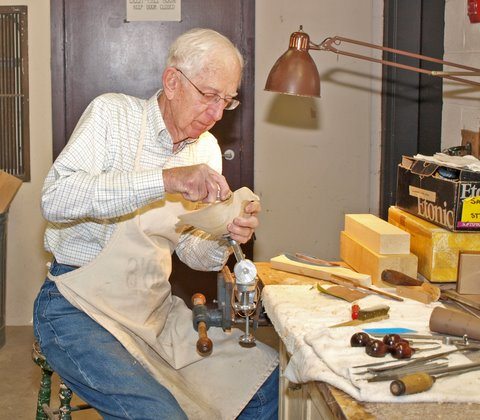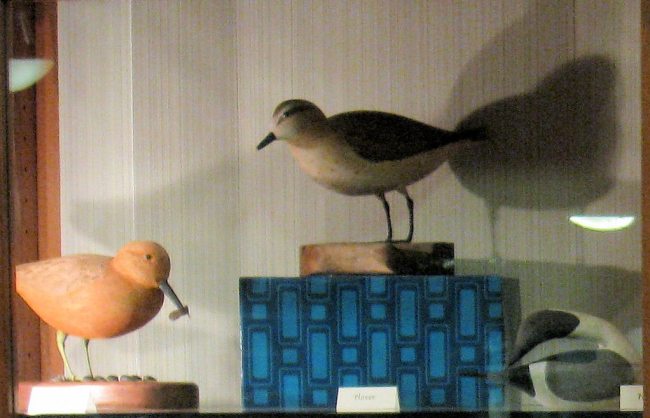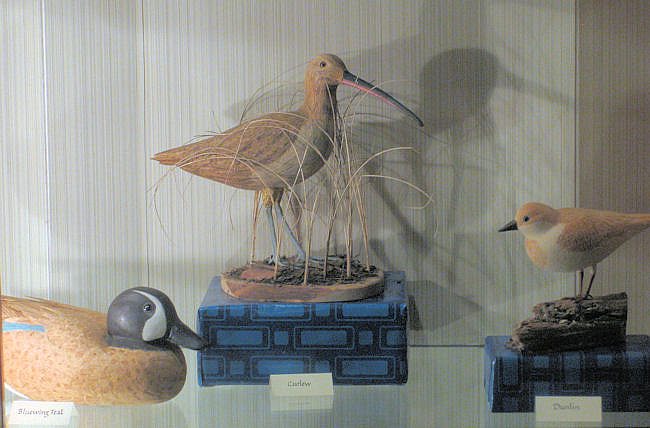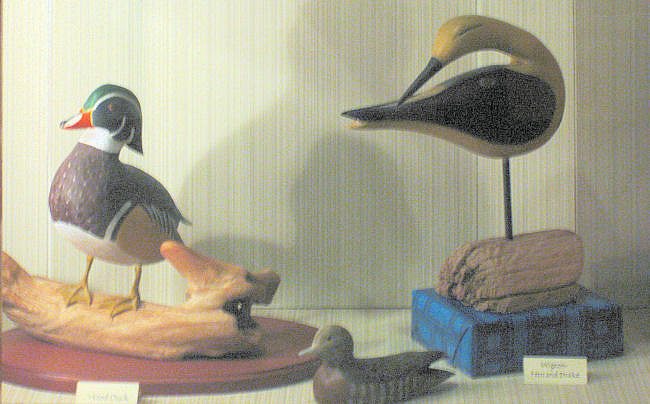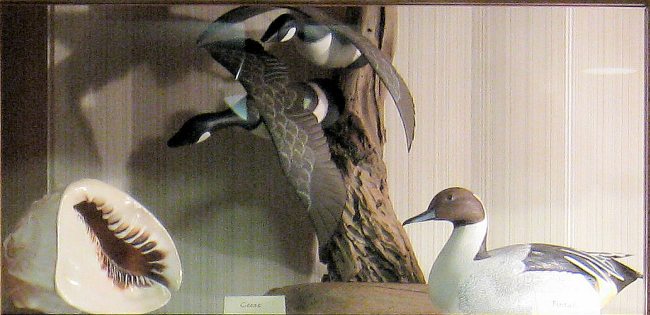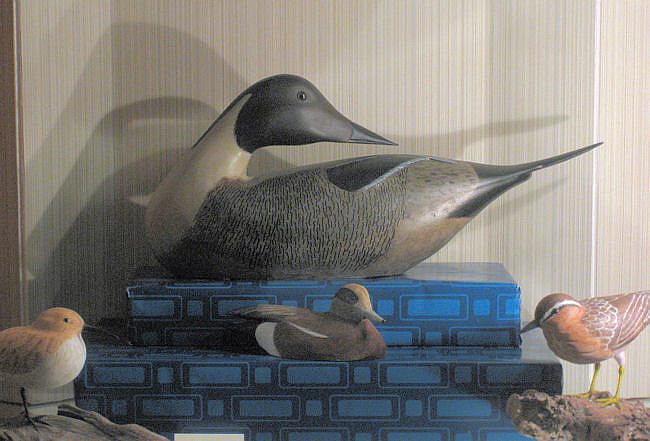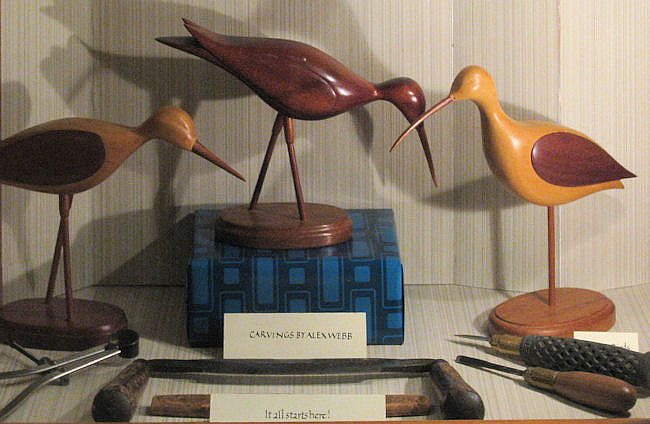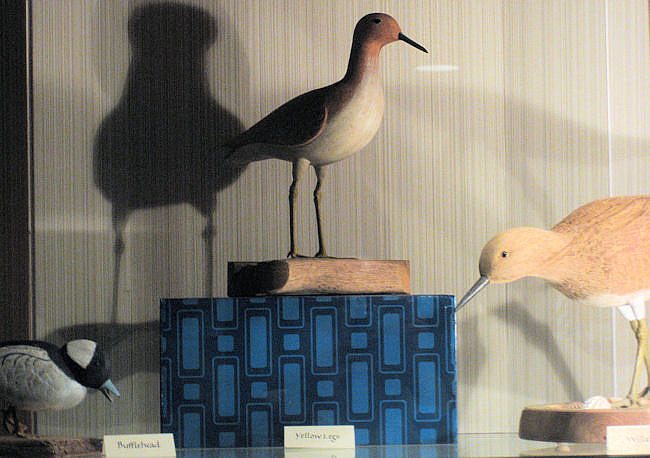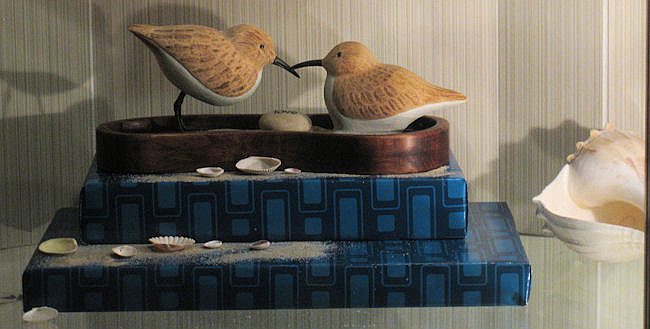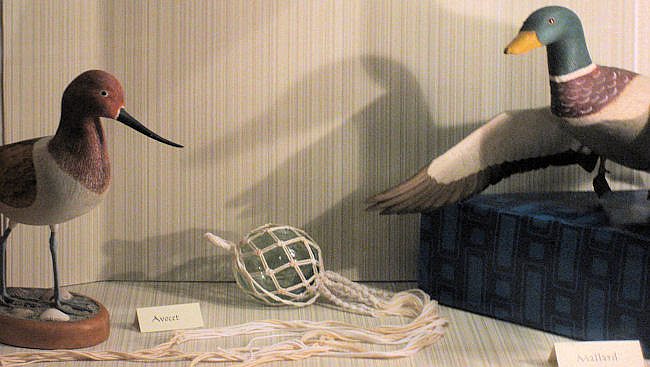A 2010 Display Case Exhibit
Alex Webb started making decoys and decorative birds in 1982 after he retired. He was not a novice woodworker; he had made furniture and model boats in past years, carving with old scalpels his father had used as a veterinarian.
The creation of a waterfowl “decoy” began in the United States in the 18th century. Methods changed over the years along with competition for better decoys. But always the decoys were made to attract waterfowl for hunters.
A new trend in waterfowl carving and painting began to gain favor in mid 20th Century. Called “Decorative Birds,” where the artist strives for absolute realism, both in the bird and the setting. These “decoys” are not for use in hunting, but as decorative works of art.
The Display Case
Unless labeled as decoys, the birds in this display are all decorative birds. The photos are by Mike Carrell and the text is based on an article by Maggie Woodard.
The names of the birds link to that bird’s page on the website of the Cornell Ornithology Lab, All About Birds.
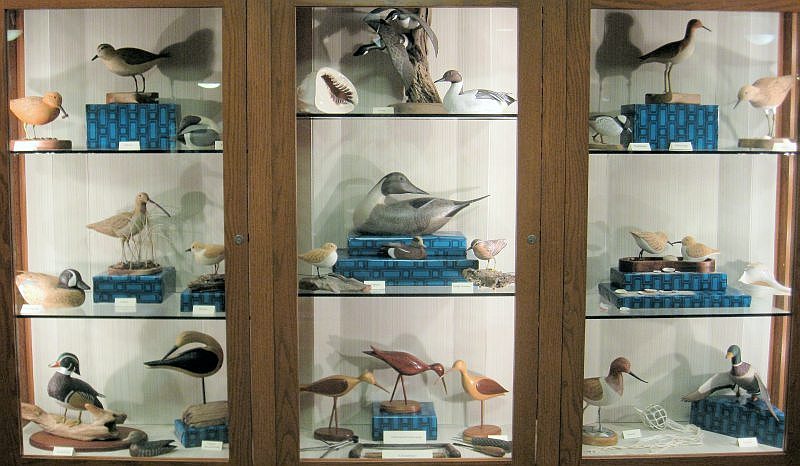
Left column, top to bottom
The Blue-winged Teal in this section illustrates the use of both a burning tool and of paint. The burning tool is the size of a fountain pen. It is attached to a transformer that controls the degree of heat. The hotter the tool, the darker the mark it creates.
Middle column, top to bottom
The mini Canada Geese, mounted on a column of driftwood, appear to be in flight:
Alex’s Preening Pintail decoy is a copy of one carved by Elmer Crowell which sold for over $1 million in 2007.
Above: Pintail Decoy; below: Sandpiper, Male Wigeon (mini), Ruddy Turnstone
Right column, top to bottom
Note the typical use of detailing with a burning tool to create the feathers on this decorative Sandpiper display that Alex made for his daughter. The female of the pair is nesting on the sand and the word “Love” is etched on the rock.

